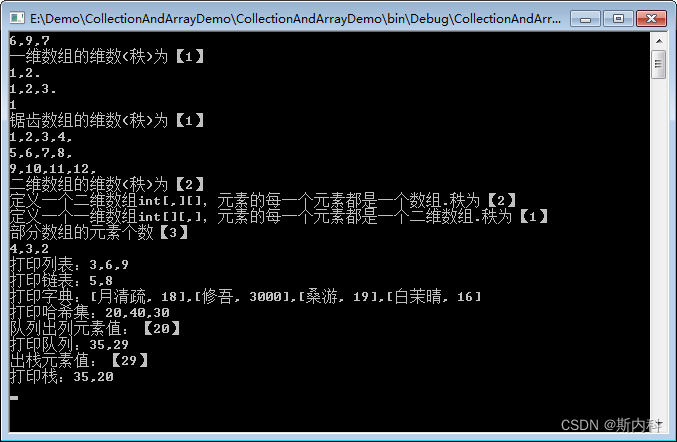我们在对文件进行io操作的时候,经常看到需要我们传递一个 io.Reader 或者 io.Writer 对象作为读写的入参, 那么我们该如何或者这些个RW对象呢? 其实很简单,你只需要查找一下哪些对象实现了 Read或者 Writer方法,那么你只需要创建一个实现了这2个方法之一的对象 , 那他就可以是一个 io.Reader 或者 io.Writer 。
当然最常见的应该就是我们的 os.File对象了, 另外还有 bufio.Reader, bytes.Buffer 等对象都可以作为io的RW入参。
当然你也可以自己定义一个对象,实现 io.Reader 或者 io.Writer 接口中定义的方法,那么你的对象也可以作为一个RW入参来使用了。 这个也就是go语言中面向接口编程的完美体现。
go中Reader Writer接口定义
type Reader interface {Read(p []byte) (n int, err error)
}type Writer interface {Write(p []byte) (n int, err error)
}os.File对象中的RW实现代码
// Read reads up to len(b) bytes from the File and stores them in b.
// It returns the number of bytes read and any error encountered.
// At end of file, Read returns 0, io.EOF.
func (f *File) Read(b []byte) (n int, err error) {if err := f.checkValid("read"); err != nil {return 0, err}n, e := f.read(b)return n, f.wrapErr("read", e)
}// Write writes len(b) bytes from b to the File.
// It returns the number of bytes written and an error, if any.
// Write returns a non-nil error when n != len(b).
func (f *File) Write(b []byte) (n int, err error) {if err := f.checkValid("write"); err != nil {return 0, err}n, e := f.write(b)if n < 0 {n = 0}if n != len(b) {err = io.ErrShortWrite}epipecheck(f, e)if e != nil {err = f.wrapErr("write", e)}return n, err
}
bufio.Reader中的RW实现代码
// Read reads data into p.
// It returns the number of bytes read into p.
// The bytes are taken from at most one Read on the underlying Reader,
// hence n may be less than len(p).
// To read exactly len(p) bytes, use io.ReadFull(b, p).
// If the underlying Reader can return a non-zero count with io.EOF,
// then this Read method can do so as well; see the [io.Reader] docs.
func (b *Reader) Read(p []byte) (n int, err error) {n = len(p)if n == 0 {if b.Buffered() > 0 {return 0, nil}return 0, b.readErr()}if b.r == b.w {if b.err != nil {return 0, b.readErr()}if len(p) >= len(b.buf) {// Large read, empty buffer.// Read directly into p to avoid copy.n, b.err = b.rd.Read(p)if n < 0 {panic(errNegativeRead)}if n > 0 {b.lastByte = int(p[n-1])b.lastRuneSize = -1}return n, b.readErr()}// One read.// Do not use b.fill, which will loop.b.r = 0b.w = 0n, b.err = b.rd.Read(b.buf)if n < 0 {panic(errNegativeRead)}if n == 0 {return 0, b.readErr()}b.w += n}// copy as much as we can// Note: if the slice panics here, it is probably because// the underlying reader returned a bad count. See issue 49795.n = copy(p, b.buf[b.r:b.w])b.r += nb.lastByte = int(b.buf[b.r-1])b.lastRuneSize = -1return n, nil
}// writeBuf writes the Reader's buffer to the writer.
func (b *Reader) writeBuf(w io.Writer) (int64, error) {n, err := w.Write(b.buf[b.r:b.w])if n < 0 {panic(errNegativeWrite)}b.r += nreturn int64(n), err
}
bytes.Buffer中的RW实现代码
// Read reads the next len(p) bytes from the buffer or until the buffer
// is drained. The return value n is the number of bytes read. If the
// buffer has no data to return, err is io.EOF (unless len(p) is zero);
// otherwise it is nil.
func (b *Buffer) Read(p []byte) (n int, err error) {b.lastRead = opInvalidif b.empty() {// Buffer is empty, reset to recover space.b.Reset()if len(p) == 0 {return 0, nil}return 0, io.EOF}n = copy(p, b.buf[b.off:])b.off += nif n > 0 {b.lastRead = opRead}return n, nil
}// Write appends the contents of p to the buffer, growing the buffer as
// needed. The return value n is the length of p; err is always nil. If the
// buffer becomes too large, Write will panic with ErrTooLarge.
func (b *Buffer) Write(p []byte) (n int, err error) {b.lastRead = opInvalidm, ok := b.tryGrowByReslice(len(p))if !ok {m = b.grow(len(p))}return copy(b.buf[m:], p), nil
}注意这些方法一般是绑定在指针类型的对象上, 所以你在创建你需要的RW对象的时候需要使用&指针符号或者使用 new函数来创建对象, 如:w := &bytes.Buffer{} 等效于 w := new(bytes.Buffer)




![[C++基础编程]----预处理指令简介、typedef关键字和#define预处理指令之间的区别](https://img-blog.csdnimg.cn/direct/608e8e0dc539444d836932fdcdf0f46f.png)